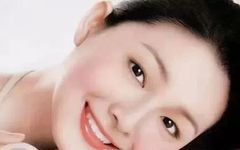Wang, wen, qie, wen (望闻切问) is the method of diagnosis in Traditional Chinese Medicine (TCM). Color diagnosis (色诊) is a part of visual diagnosis (望诊). Observing the complexion and color is not only for doctors; we can also use it for self-examination. In Chinese culture, red and yellow are the primary colors. Each person has their normal color, the five organs have their proper colors, the four seasons have their seasonal colors, and different body parts have their positional colors. Pathological colors are observed under bright indirect sunlight and are abnormal, improper, out of season, or out of position, showing excess or deficiency.
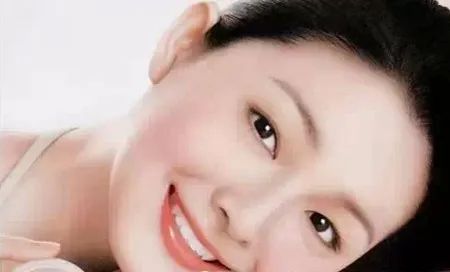
Color observation should be based on the first impression from a distance, diagnosing from shape to color, from far to near, and from large to small, in a sequence of one vertical and three horizontal lines. Pathological colors that are bright, moist, and lustrous are considered mild, while dark, dry, and turbid colors are severe. Pathological colors can be classified into deficiency and excess, exterior and interior, cold and heat, yin and yang. White indicates deficiency, while red indicates heat. The heart, liver, spleen, lungs, and kidneys each have their colors: white for lungs, red for heart, yellow for spleen, green for liver, and black for kidneys. Visual diagnosis requires a comprehensive examination of various diagnostic methods. Facial color is just one aspect; the eyes, lips, tongue, and ears must also be carefully observed.
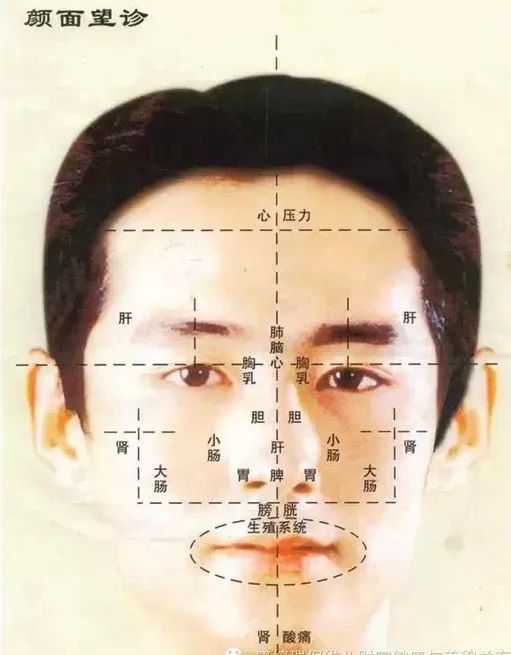
【Yellowing of the Face】Our facial complexion should consist of both red and yellow colors; if only yellow remains, it indicates a pathological color.

Elevated blood lipids can cause the face to appear yellow, dark, and somewhat turbid, resembling a feeling of not having washed the face properly, which TCM refers to as yellow and dark.

A pale yellow color at the tip of the nose indicates spleen qi deficiency, where the patient is reluctant to eat, feels bloated after eating a little, and does not bloat when not eating, which may also lead to irregular bowel movements and gradual weight loss.
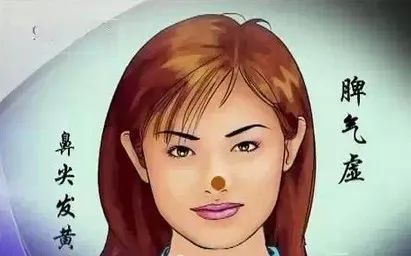
If pale yellow appears on both sides of the nostrils, it indicates stomach qi deficiency. Those with stomach qi deficiency may want to eat but cannot eat much, feel uncomfortable after eating, and have poor digestion.
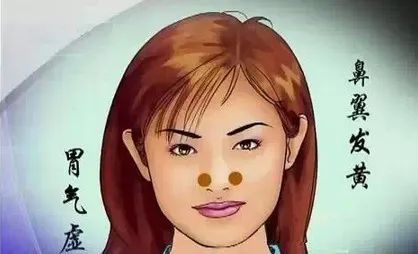
Yellow and dark colors between the eyebrows and above the eyebrows indicate phlegm-dampness. In this case, maintaining a good mood and taking some qi-moving and phlegm-resolving herbs will gradually lead to recovery.
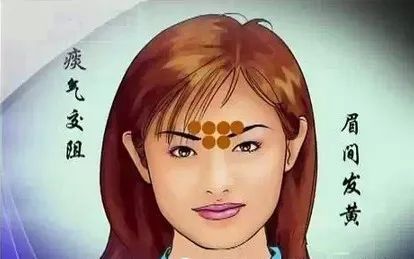
A pale yellow face that is also dry indicates spleen and stomach weakness. One should take herbs to tonify the spleen.

If the face is both yellow and loud, it indicates that the patient may soon experience edema.

【Redness of the Face】Our facial complexion should consist of both red and yellow colors; if only red remains, especially prominently, this red indicates a pathological condition. A completely red face indicates fever or rising blood pressure, suggesting that liver fire is ascending. This is excess heat, which must be treated with methods to clear heat and resolve fire.

If the face is pale but has one or more bright red streaks on the cheeks, it indicates true cold with false heat.
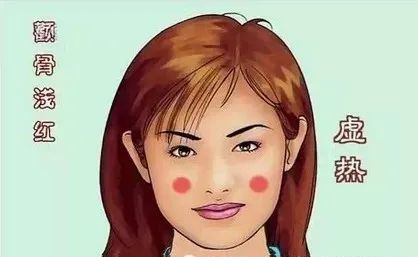
Redness on the Cheeks Indicates Deficiency Heat.
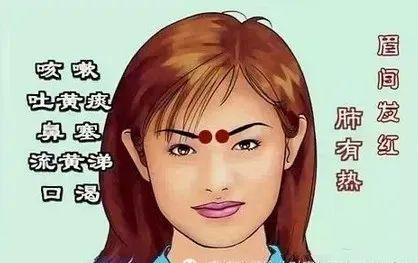
Redness in the inner corners of the eyes indicates excessive heart fire.

If redness appears on the bridge of the nose, it indicates excessive liver fire.
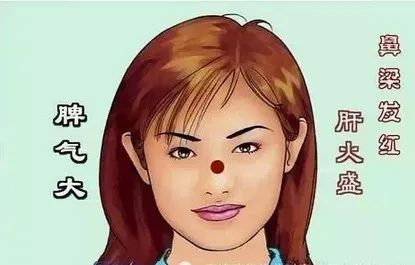
If the tip of the nose is red, it indicates excessive spleen and stomach fire.
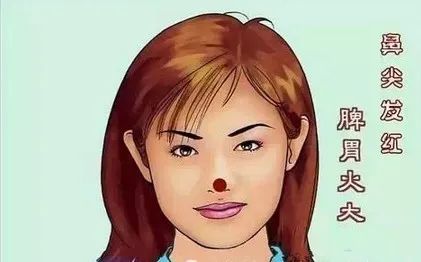
【Blueness of the Face】

Blueness or purpleness on the bridge of the nose indicates liver disease; poor spleen qi.
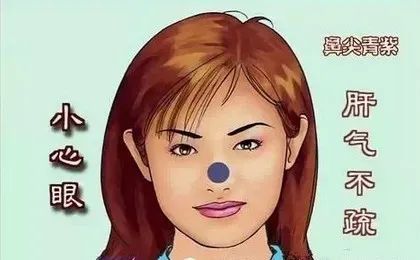
Dark blue or purple under the eyes, delayed menstruation, abdominal pain, lower back pain, or even thigh pain indicates dysmenorrhea. The menstrual blood is dark and contains clots.
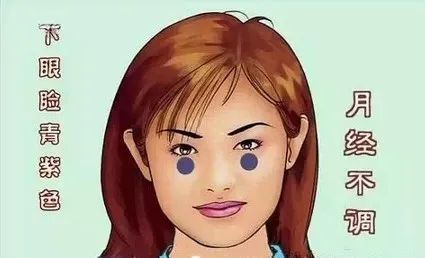
A blue face may indicate chronic hepatitis, liver enlargement, liver cirrhosis, or liver cancer.

If the color develops into a blue with a hint of black and a black with a hint of yellow, it indicates that the liver disease has reached an advanced stage.

A blue face with blue lips indicates that heart and lung diseases are quite severe.

【Paleness of the Face】Natural white skin contains red; it is a subtle red and white. Natural white is bright, moist, and reserved. The white color after illness is not bright but dark, not moist but dry, and even withered. White appearing between the inner corners of the eyes indicates heart qi deficiency and heart blood deficiency. Heart qi deficiency is white and dark; heart blood deficiency is white and dry.
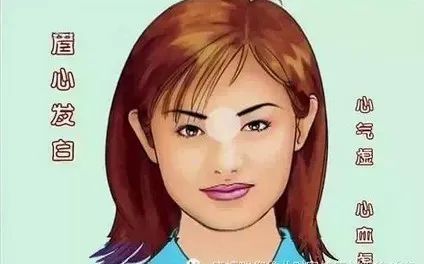
White appearing at the highest point of the nasal bridge indicates liver blood deficiency. Patients often experience restless sleep, many dreams, and a frequent feeling of fear, with dreams often being fearful. They may also talk in their sleep or even experience sleepwalking. They will also have dry eyes, reduced tears, and often cannot see clearly in the evening, leading to decreased vision. These individuals tend to be cautious in handling matters but indecisive, which is due to liver blood deficiency.
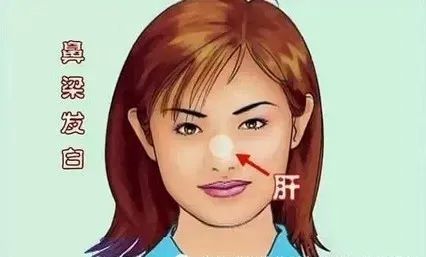
A pale white face indicates blood deficiency; the paler the face, the more severe the blood deficiency. When blood is depleted, the face appears dull and dry, lacking any luster, resembling white ash on a wall, which TCM refers to as “妖白” (yao bai). Blood deficiency leads to symptoms such as palpitations, dizziness, insomnia, excessive dreaming, forgetfulness, numbness in the limbs, and in women, reduced menstruation and delayed periods.
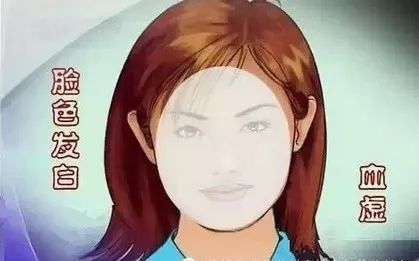
【Blackness of the Face】If the black color is bright and moist, it is acceptable. However, if it is not bright and dark, not moist and dry, and not reserved but exposed, it falls within the pathological range. A completely black face or localized blackness primarily indicates kidney disease.

Blackness appearing at the intersection of the vertical line from the temples and the horizontal line from the base of the nose indicates kidney disease.
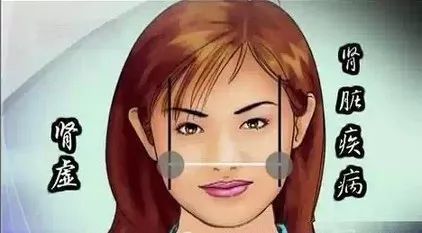
Sometimes, blackness may also appear on the cheekbones, indicating kidney deficiency. Blackness may even appear above the eyebrows.
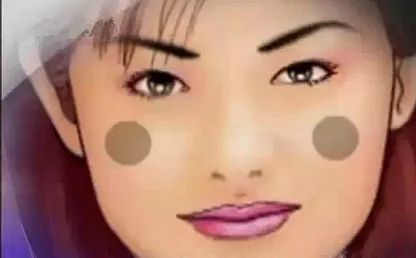
Individuals with kidney yin deficiency may appear dark and emaciated, with high cheekbones and thin cheeks, experiencing virtual heat in the afternoon and early night, along with night sweats. This is a more severe condition, generally occurring in younger individuals with reproductive system disorders.
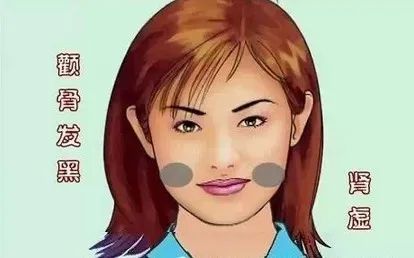
Gray-black with edema under the eyes indicates kidney deficiency with water retention; patients often quickly develop edema in the body.
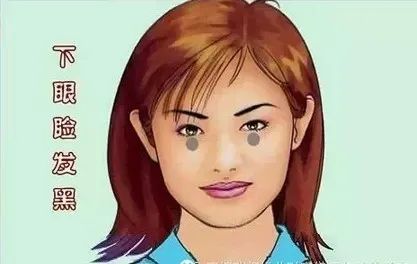
If the lower eyelids are dark and black without swelling, consider menstrual disorders, especially dysmenorrhea.
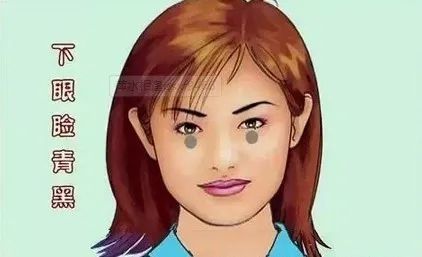
Gray-black forming a gray circle around the eyes indicates a lack of regularity in life. Long-term staying up late and insufficient sleep can lead to dark circles.
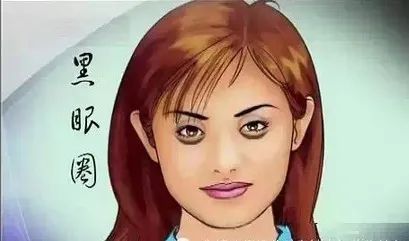
During the hours of zi (子) and wu (午), when both eyes are closed, the yin qiao mai (阴跷脉) and yang qiao mai (阳跷脉) connect, allowing the yin and yang energies of the body to exchange, restoring physical strength. Therefore, TCM believes it is essential to sleep during these hours. The wu hour refers to 11 AM to 1 PM, and the zi hour refers to 11 PM to 1 AM. During these two periods, one should lie in bed with eyes closed, which is an important health measure. If one does not sleep during these hours for a long time, the vitality of the body will be compromised, reflected in the appearance of dark circles.
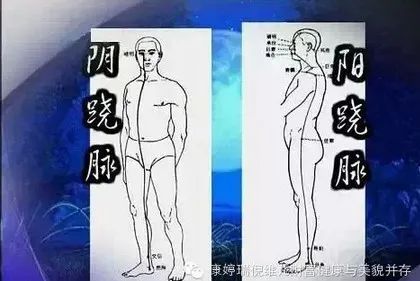
A gray-black face with blue-purple lips may indicate chronic obstructive pulmonary disease. When the body is hypoxic, the face may appear gray-black, and the lips blue-purple.
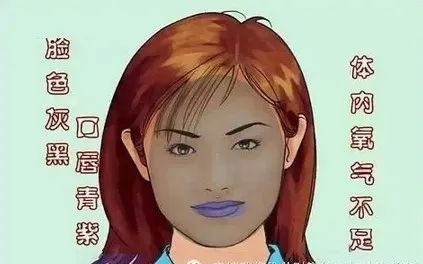
Two thousand years ago, ancient TCM texts stated, “If black appears in the garden, as large as a thumb, one will not be ill but may die suddenly.” If a black spot the size of a thumb appears above the left or right eyebrow, even if the patient has no symptoms, they may suddenly die. This blackness may indicate a crisis caused by rapid adrenal insufficiency.
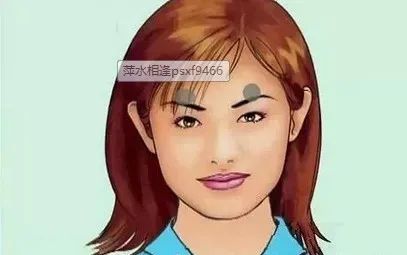
Mastering color diagnosis can serve as the first line of defense for our health.
Recommended Reading:
| Learn Simple Pulse Diagnosis in Ten Minutes |
| Dynamic Pulse Diagnosis Animation, Come Learn |
| Memorize the Chinese Herbal Compatibility Chart, You Will Be a TCM Practitioner |
| Observe Tongue Imprints to Understand Spleen and Stomach Deficiency and Excess |
| Latest Version: Dynamic Acupuncture Point Animation! |
1. The information in this article is sourced from the internet and is collected for learning and research purposes. If there is any copyright infringement, please send a message within the site, and we will address it within three working days. 2. All folk remedies, traditional prescriptions, ancient formulas, and treatment plans mentioned in this article are for research purposes only and do not constitute any medical advice. Please do not blindly follow them. This article does not bear any responsibility for any consequences arising from this.


